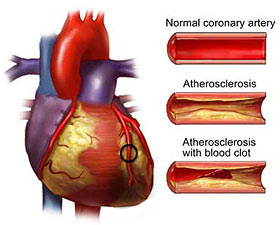The American Diabetes Association (ADA), in conjunction with the European Association for the Study of Diabetes (EASD), have just released their joint Consensus Report at the EASD meeting in Stockholm, published simultanously in Diabetes Care.
This rich and beautiful Consensus Statement covers the gamut of treatment of type 2 diabetes, which is far beyond the scope of a single blog post.
What I want to focus on today is a true turning point in how we approach treatment of type 2 diabetes. Until now, guidelines for which medications to recommend for type 2 diabetes focus on protection of the heart and kidneys, and blood sugar control. While these remain extremely important goals of treatment, they are now joined by another primary target in treatment: weight management.
As the authors note, weight loss had previously been viewed mostly as a strategy to improve blood sugars and reduce the risk of other health complications associated with elevated weight. With weight loss now identified as a primary treatment target in people with type 2 diabetes and elevated weight, they point out that:
- the greater the weight loss, the greater the benefit
- 5-10% weight loss confers metabolic improvement (eg sugars, cholesterol, blood pressure)
- weight loss of 10-15% or more can result in remission of type 2 diabetes
- weight loss can improve cardiometabolic risk factors and, importantly, can improve quality of life.
As far as how to lose weight, the consensus statement points out/advises:
- There is no single ratio of carb:protein:fat intake that is optimal for every person.
- Construct an overall healthy eating plan that results in less calories in than out.
- The use of glucose-lowering medications that provide significant weight loss, particularly the GLP1 receptor agonists with high weight loss efficacy, should be considered, as they can provide 10-15% weight loss or more.
- Weight loss medications, in addition to lifestyle change, can reduce weight and improve diabetes control.
- Bariatric (metabolic) surgery should be considered for people who are appropriate candidates. It is most effective early during diabetes.
In accordance with the triple priorities of heart/kidney protection, glucose control, and weight loss, the consensus statement no longer recommends metformin as the default first line treatment, as the benefits of GLP1 receptor agonists and SGLT2i inhibitors for all three treatment targets often make these medications more appropriate to use first (see figure 3, page 13).
Again, I emphasize that there are so many important aspects to this update, including particular focus on taking each person’s social circumstances into account, supporting patients in self management, physical behaviors through the 24-hour clock (including a brand new section on sleep!), a new section on fatty liver disease, and so much more!
Diabetes Canada was not part of this consensus statement, but I’m certain that it will be a hot topic of discussion at our upcoming Diabetes Canada professional conference.
Share this blog post using your favorite social media link below!
Follow me on twitter! @drsuepedersen
www.drsue.ca © 2022












